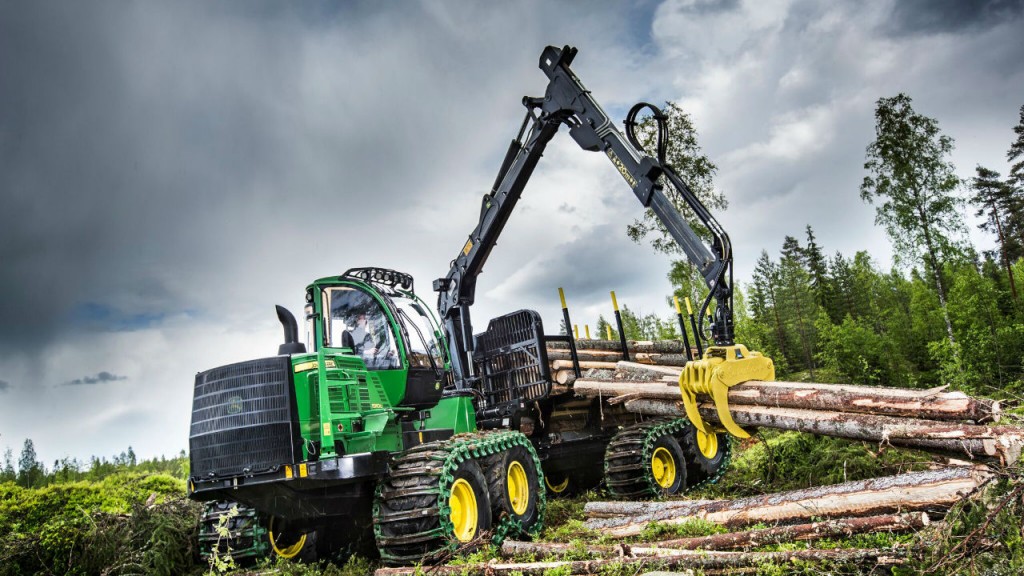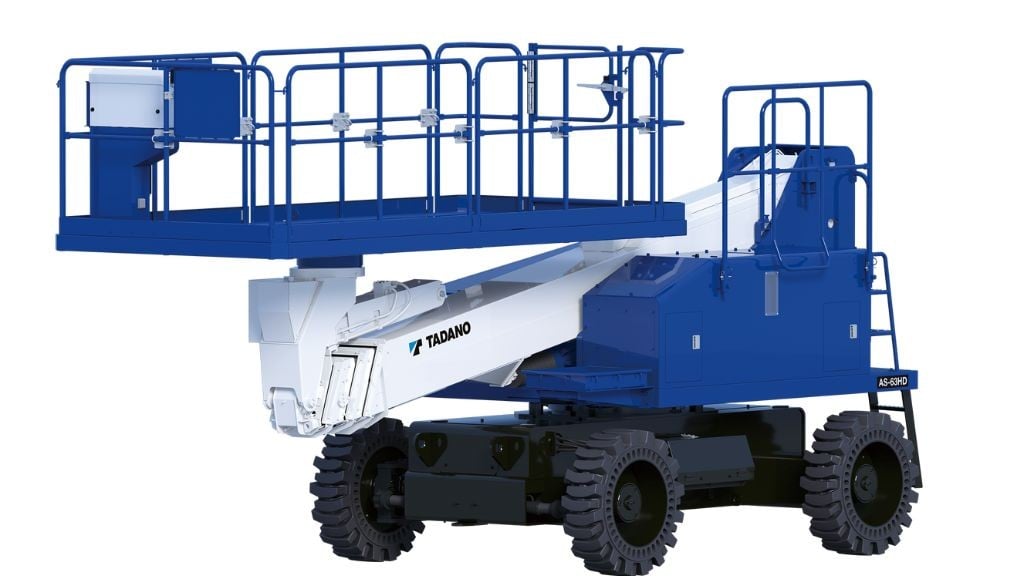
John Deere has announced its latest addition to its forwarder lineup, the 1910G Forwarder. The largest model in the John Deere forwarder line, the 1910G offers operators the power and efficiency needed to tackle tough jobs, even on difficult terrain. The 1910G machines are equipped with a Final Tier 4 200kW/268 horsepower engine. The maximum engine output has increased by 7.5 percent and torque by 21 percent compared to previous models, offering customers the power and performance they expect in a John Deere machine. Additionally, the drive hydraulics have been increased, with the transmission boasting 4.5 percent more tractive force.
"The G-Series Forwarder line provides our customers with the machines they need to tackle each workday, regardless of the conditions they may face. With our 1910G machines, operators are able to handle even larger loads," said Niko Solopuro, product marketing manager, WCTL Forwarders and Automation. "Additionally, we maintained the features of the G-Series lines that our customers appreciate — including the improved operator station and configurable joystick controls — to develop a machine that customers enjoy while also boosting operator productivity."
A key feature on this model is the adaptive driveline control, a first in the forestry industry. This software-based control system improves the productivity and drivability of this G-Series forwarder, and enables the operator to choose the desired RPM setting (Eco, Normal, Power) for the operating conditions. The system automatically adjusts the engine's RPMs to correspond with the engine load. In high-load situations, the driveline control ensures that the diesel engine runs smoothly and uses the maximum available tractive force efficiently.
Another key feature is the larger load capacity. The cross-sectional area of the wide load space is bigger and the new-generation headboard provides excellent visibility to the load space. Additionally, the CF8 boom on the 1910G moves smoothly and seamlessly, increasing accuracy and efficiency.
Boom control is further enhanced using Intelligent Boom Control (IBC). Exclusive to John Deere, IBC is an innovative technology that improves operator productivity by automatically controlling the lift, slew and extension of the boom based on the location of the grapple. IBC increases accuracy and, ultimately, the number of loads per each work shift. Additionally, configurable joystick controls allow the dealer to quickly reconfigure the machine to meet the preference of the operator. The operator can select one of three configuration options, providing the operator with an intuitive system.
The 1910G, as well as the rest of the G-Series Forwarder line, is equipped with the TimberMatic™ F-16 control system. The improved control system features a configurable user interface, cruise control and inclination display, increasing operator efficiency. Additionally, the new software offers service personnel remote access to the machine. New MECA control modules, simple CAN busses and a streamlined electrical system improve the efficiency of machine functions.
The 1910G is available with two cab options, fixed or rotating and leveling, both of which are designed to improve operator comfort. The rotating and leveling cabin helps the driver to maintain the correct working positions to reduce strain on the back and shoulder areas, even when working on uneven terrain. With a cabin rotation of 290 degrees, the 1910G model offers a view of the boom and grapple, enabling safer, easier log loading. The large windows of the cab allow for virtually unrestricted all-around visibility. Other fatigue-beating features, including ergonomic armrests, a fully adjustable air-cushioned seat and an automated climate-control system, help to boost operator productivity.
All John Deere forwarders come standard with JDLink™ in base for five years. JDLink, the proven John Deere telematics solution, remotely connects owners and managers with their equipment and local John Deere dealer. Through JDLink, they have access to alerts and machine information, including performance and maintenance data, allowing them to better manage where and how equipment is being used, even from miles away.



